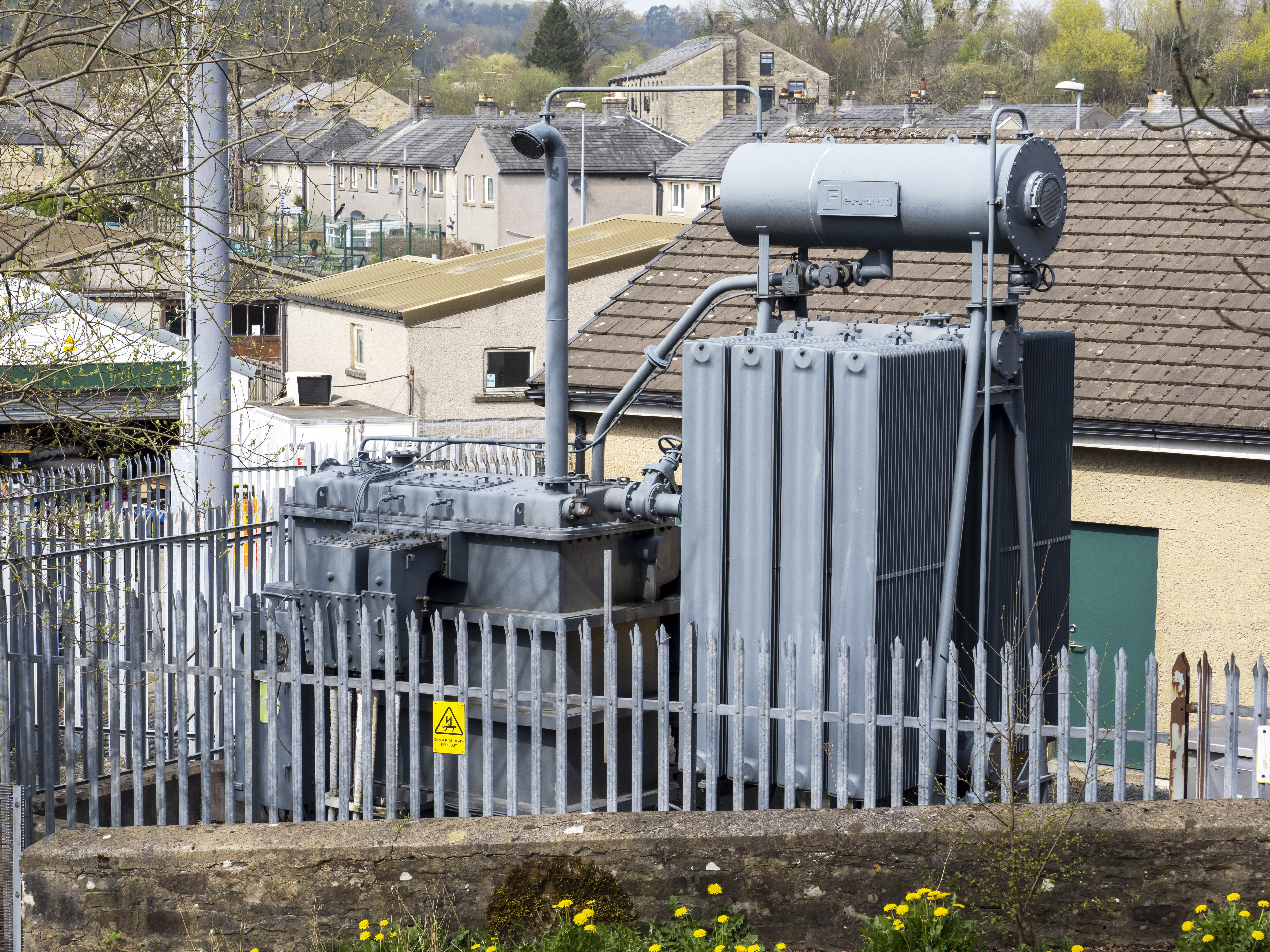Substations
Substations are electrical installations helping move electricity from where it is generated to where it is needed. They vary in size, which is dependent on the operating voltage, from the largest 400 kV sites which can cover an area of several football pitches to buildings the size of a garden shed down to equipment mounted on wooden poles. Despite the differences in size, substations share similar functions of switching electric circuits and transforming between different voltages.
For most substations the highest electric and magnetic fields are produced by the overhead lines and cables that connect them to the network, rather than from the equipment inside the substation. Where the equipment produces fields which reach outside the perimeter of the substation the fields reduce to a background level within a couple of metres.
Types of substations
The different type of substations that we refer to on this site are:
These are the last substations before electricity is used in homes at 230 volts. They can be in a range of sizes and designs:

Brick - these are small buildings around the size of a garage.

Outdoor - the separate components are mounted on the ground and enclosed by a metal or wooden fence.
Cabinet - built into a fully enclosed cabinet
Pole mounted - the transformer is raised above ground on a wood pole.
